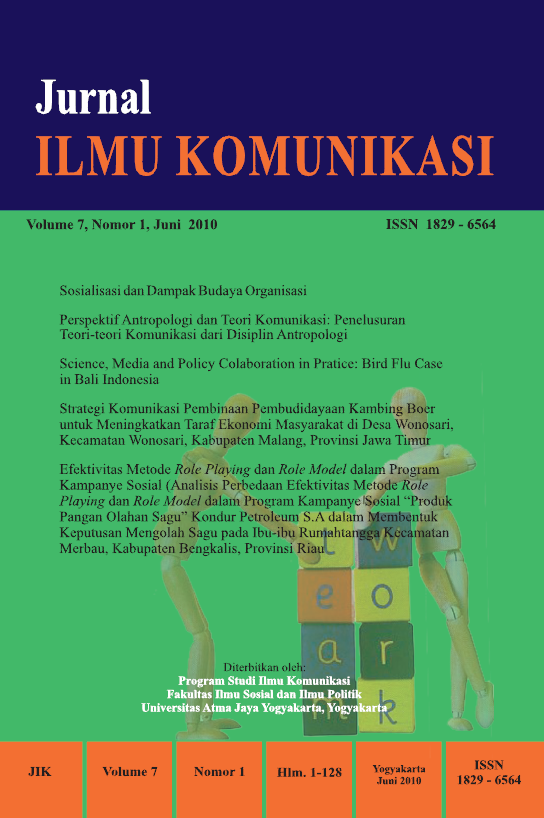Perspektif Antropologi dan Teori Komunikasi: Penelusuran Teori-teori Komunikasi dari Disiplin Antropologi
DOI:
https://doi.org/10.24002/jik.v7i1.195Abstract
Abstract : It is important to learn the perspectives derived in communication theories in order to well understand the focuses and characteristic of those theories. There are several perspectives and one of them is derived form Anthroplogy. In this sense, communication is considered as having holistic character and concern in interpretive activities. In this regards, communication is contextualized by culture. Therefore as well culture is unique, communication is also unique.There are several kinds of contribution of Anthropology in the development of communication theories which can be traced. First, structural linguistic as the branch study of linguistic anthropology contributes in semiotics studies. As well, sociolinguistic contributes to understand the relationsip between social reality and culture. Second, in the area of historical archeology, the contrubition of Anthropology is represented in the frame of knowledge on unwritten communication activities. Third, the contribution of ethnology in innovation and diffussion theory as well as ethnography in the emergence of experience and interpretation theories also represent the contribution of Anhtropology. Similary, it can be traced the contribution of Anthropology through the contribution of ethnohistory in explaining the modes of communication of certain community.
Downloads
Published
How to Cite
Issue
Section
License
Jurnal ILMU KOMUNIKASI is an academic journal. As such, it is dedicated to the open exchange of information. For this reason, JIK is freely available to individuals and institutions. Authors who publish in Jurnal ILMU KOMUNIKASI will release their articles under the Creative Commons Attribution (BY) License. This license allows anyone to copy and redistribute the article in any medium or format as well as remix, transform, and build upon the material for any purpose, even commercially as long as they credit the authors for the original creation. For details of the rights authors grants users of their work, see the "human-readable summary" of the license, with a link to the full license. (Note that "you" refers to a user, not an author, in the summary)
 This work is licensed under a Creative Commons Attribution 4.0 International License.
This work is licensed under a Creative Commons Attribution 4.0 International License.














